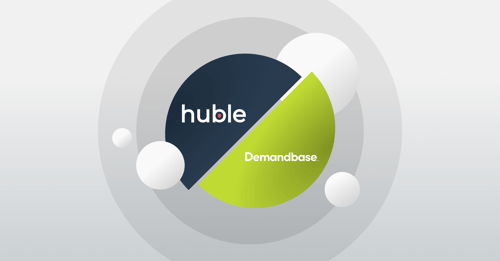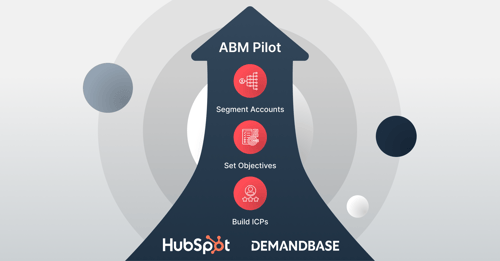These best practice case studies particularly highlight the significance of content creation, growth-driven design and team empowerment in boosting SEO performance.
SEO (Search Engine Optimisation) is an essential consideration for businesses looking to make a breakthrough in today’s competitive online landscape.
With your content well optimised, you can make sure that it reaches your target audience and better resonates for more potential customers. However, putting together a best practice SEO strategy isn’t always so easy and it’s tough to know where to start.
Case studies provide us with real-world examples and best practices of techniques already being used successfully. By studying these successful strategies, we hope to help you pull inspiration from what already works and apply it to your own approach.
The power of proactive strategies: 3 SEO case studies
Huble's experience in delivering effective SEO solutions and outcomes can be highlighted in these three SEO case studies.
They are just some examples of optimisation strategies that we have successfully executed and have yielded tangible and measurable results. If you are interested in achieving similar results, get in touch.
Case study 1
What was the challenge?
Managing a frequently changing website with multiple regional teams can be a challenge for any large business. But what happens when you add in the need for strong SEO performance and tackling technical SEO issues at scale?
This was the exact issue that one of our clients faced, and we were able to provide a solution that resulted in significant improvements in their SEO performance.
One of the primary challenges was reducing cannibalisation of traffic by the main English language site from other regions. In this instance, traffic cannibalisation was occurring when the US version of a site page was ranking in place of regional content, even when users made a search from that region. This was leading to a bad user experience because not all products available in the US may necessarily be available in other regions. It was also impacting regional reporting, as a significant proportion of traffic and leads was being attributed to the US site incorrectly.
Alongside this, the client needed support overcoming the high number of technical SEO issues at scale and preventing repeated issues from occurring time and again. With a large global team, changes were occuring to the site on a daily basis, leading to issues such as broken links, missing redirects and meta data that was missing, too long, too short or duplicate.
Huble’s Solution
We tackled this by rolling out a program of page optimisation, localisation and translation of content, and ensuring the correct deployment of hreflang tags across the entire site.
Through following these SEO best practices, we not only helped to reduce cannibalisation but also all the main regions benefited with improved SEO performance.
To ensure the right pages were shown to users based on their location and search intent, we worked with the client's website team to develop a future-proof process of hreflang tag deployment.
Most of our clients use the HubSpot CMS and benefit from its built-in hreflang tag deployment and multi-language content features. But as this client was using another CMS, we worked with their development team to outline the SEO best practices, so that an automated solution could be developed in-house.
To do this, we worked closely with the client's in-house team to develop a formalised process and educate internal teams on common actions that are likely to cause SEO issues if not managed properly.
This resulted in a dramatic decrease in technical SEO issues, and new templates were built with key features with Titles, Meta Descriptions, H1s, etc. all configured correctly. Updates to internal processes ensured that all archived pages also had redirects implemented to other content to reduce broken links.
Regional managers also received training on how to use BrightEdge alongside Adobe Experience Manager (AEM) so that any edits to regional website pages would result in better SEO performance.
Results
The results were significant, both in the short and long term. By developing these new processes, we were able to help the client achieve a 25% increase in yearly organic traffic worldwide, and improve its SEO technical health score month-on-month.
Overall, Huble helped to grow organic website traffic to 16 different websites across multiple countries in 10 different languages. The client achieved a 95% increase in US page 1 keywords and a 10% YoY organic website traffic growth in the main regions.
Since the rollout of hreflang, the cannibalisation of traffic has dropped to a minimal level, as search engines are now better able to understand which pages should be displayed where. Content is now not only translated, but localised with references to the particular region it is targeting. This particularly helped ensure the US pages were not ranking in place of other English language content for markets such as the UK, Australia & New Zealand and Singapore.
Case study 2
What was the Challenge?
Achieving higher traffic and lead generation is a common goal for businesses, but what happens when you're competing with one of the world's biggest brands?
This was the exact challenge our client faced when they set us the target to rank on page 1 of Google in the UK and Ireland for four high volume, high competition keywords.
As one of the world’s leading Microsoft Partners, our client offers expert support and consultancy for Microsoft’s Enterprise Resource Management products. But this also means that their website is in direct competition with Microsoft’s own content.
Huble’s Solution
Our overall strategy was based around Pillar Pages and Topic Clusters.
First, we created dedicated pillar pages on the Dynamics 365 Business Central product, its benefits and the services the client provides. This was followed by another pillar page on the broader benefits of ERP software as a whole.
Next, we identified that there was still a valid target audience using the older Microsoft brand names and needing support for their old products, but Microsoft's own site was focused on the latest version (Dynamics 365 Business Central) only.
To target this audience, we developed another pillar page, specifically tailored to users of these older versions of the product. These pages highlighted the history of these brands and the differences between them and Microsoft’s latest product.
All pillar pages contained approximately 1500-3000 words of optimised content to provide a broad overview of the topic.
We also supported each pillar page with approximately 20 pieces of new/existing content, each targeting their own long-tail keyword related to the pillar, and created bidirectional internal links between pillar and cluster content. These links not only help users to navigate the site more easily to find related content, they help establish to search engines that all of this content is related, and that the client is an expert thought leader in the industry.
Finally, we set up a reporting framework to monitor and report on performance.
Results
The results were impressive. All four keywords achieved page 1 positions within three months of launch, and we were particularly glad to see this result achieved forEnterprise Resource Planning, which is an extremely competitive keyword.
The client even managed to overtake Microsoft and periodically rank in 1st place over Microsoft's own site for Navision, which is an older name for its product but still used by people in the industry.
In total 211 related keywords ranked on page one of Google, and there was a 63% increase in organic traffic and 61% increase in monthly new contacts.
These results go to show the importance of SEO in developing your content strategy, as it highlights the pain points that your potential customers are having. If you can create content that solves their challenge, this can help drive more traffic and conversions through your website.
Case study 3
What was the Challenge?
How do you optimise your marketing and SEO strategies when you have multiple brands which overlap and potentially compete with themselves? The Huble team had a unique way of solving this challenge.
As a group of companies with crossover in the vacuum science market, our client faced a common challenge of ensuring customers find the most relevant brand to support their needs.
They also wanted to attract potential customers further up the buyer funnel and direct them to the most relevant brand.
Huble’s Solution
The client has a huge amount of expertise in what is an extremely technical market. To capitalise on this, Huble helped the client create, launch and grow the Vacuum Science World brand, website, forum & content repository.
This case study is a great example of how SEO works within a Growth-Driven Design (GDD) website approach.
While working on the initial launchpad website, Huble helped create Inbound content — a pillar page and supporting blog content — to drive visitors to relevant and information on the site.
The GDD approach ensured a faster time to launch this initial content, and then build upon it over time. This allowed search engines to find and index the content earlier, and over time come to recognise Vacuum Science World as an essential source of information and expertise for this niche topic.
Having continued the GDD process since 2019, the website now consists of several search engine-optimised pillar pages, a knowledge hub, an expert-led video series and a calculation tool. This is supported with regular blogs and eBooks to help educate visitors and drive Inbound leads. This portal provides expert contributions from the client team and created a community for those interested in working in vacuum technology.
Results
Since its launch in March 2019, the website has come a long way from starting at 0 organic sessions. The site averages around 15,000 monthly organic visitors, and a steady stream of leads. Organic is an essential source as it makes up over 80% of the traffic the site receives.
The portal has helped the companies to bring in users further up the buyer funnel, develop them into leads, and direct them to the most relevant brand.
Conclusion
These case studies are just some examples of the unique opportunities Huble has had to develop practical solutions to our clients complex SEO challenges.
The benefits of using effective SEO best practices cannot be overstated, and there is no shortage of inspiring success stories to learn from. With these in hand, we hope you can more easily identify which techniques will work best for achieving your desired outcomes.
But if you’re looking for further advice and support, our team of SEO experts at Huble has helped hundreds of businesses optimise their SEO strategy and achieve great results. Contact us today to find out how we can help you.
Learn more about the benefits of hiring and SEO agency vs. in house.












